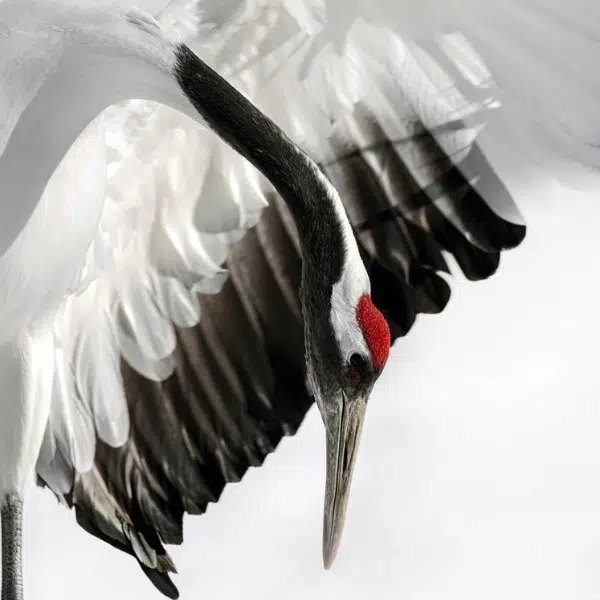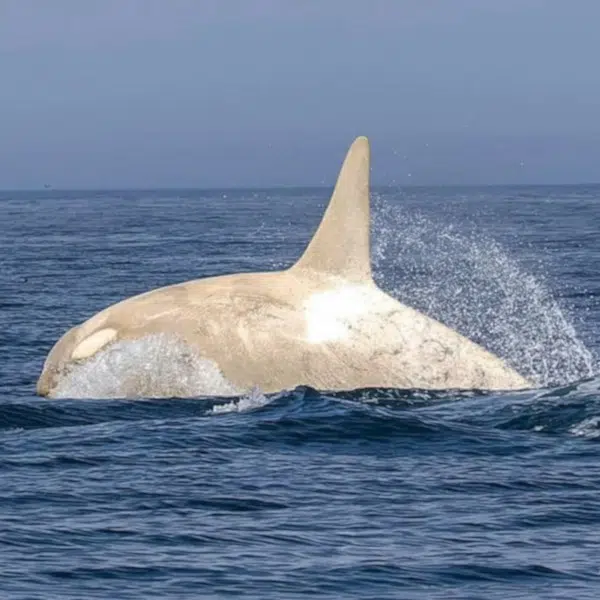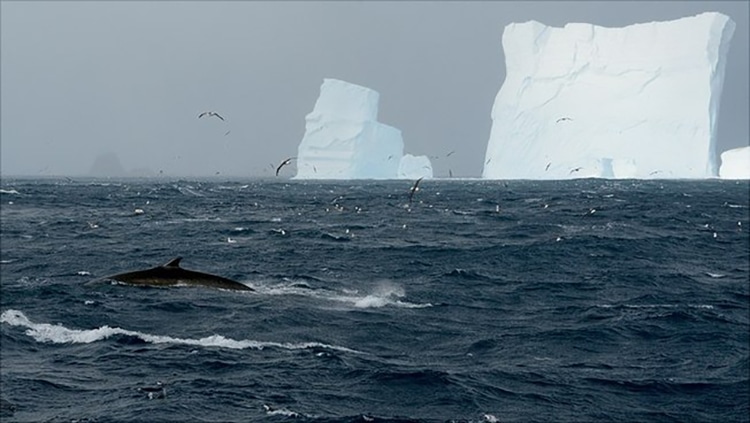
A fin whale in the Antarctic. (Photo: Dan Beecham/University of Hamburg)
The fin whale might be a bright spot in an ocean of foreboding changes in ecosystems. The species was heavily hunted in the 20th century whaling boom. In the Southern Hemisphere, their numbers sunk to endangered levels. However, the world's second largest whale is making an encouraging comeback in the Antarctic region. As described in a paper in Scientific Reports, large fin whale feeding aggregations—more amusingly and jokingly referred to as whale parties—have returned to the waters in which they were once hunted. Scientists estimate their southern numbers may be 8,000 strong, bumping them up to vulnerable status.
The fin whale can be over 60 feet long and weigh 100,000 pounds. These massive mammals live 70 to 80 years without being hunted. However, boats are still a danger to the species. Like other whales, they eat krill. Fin whales come together in aggregations of various sizes to feast at the surface. Recently, a BBC team filmed a massive swarm of 150 whales unlike any seen in years. Off the coast of Antarctica, fin whales leaped and danced as they fed in the cold waters. “The water around us was boiling because the animals were coming up all the time and causing splashes,” Dr. Helena Herr, a paper author, said to ABC. “It was thrilling just standing there and watching it.”
While global populations of fin whales are now estimated at 100,000, much more is known about the northern whales than the southern. Despite their large size, the latter's breeding places and patterns remain a mystery. Researchers tagged several whales, but the pandemic interrupted tracking. Even now, their global population is dwarfed by the number by which were slaughtered in the past century: an estimated 700,000 whales. But the rebounding population is evidence that conservation efforts are working, and that the whales themselves are resilient. While threats from boats and climate change remain, the return of the whales is something to celebrate.
Fin whale populations in the southern hemisphere are rebounding from endangered to vulnerable.
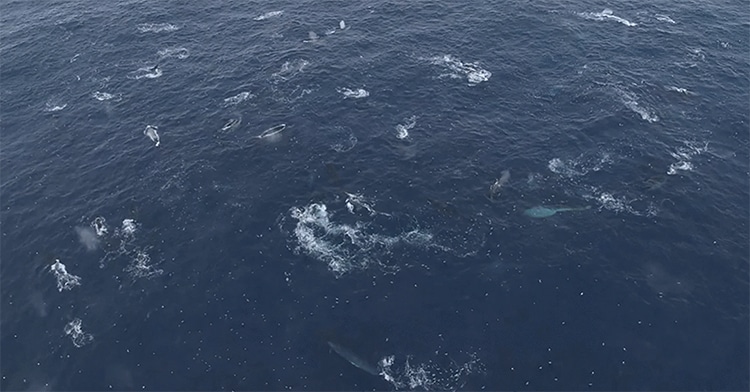
A fin whale feeding aggregation. (Photo: Figure 3, BBC (OSM video 2)/Nature)
Hunted almost to extinction, they have now returned to feed in “whale parties” in their ancient hunting grounds.
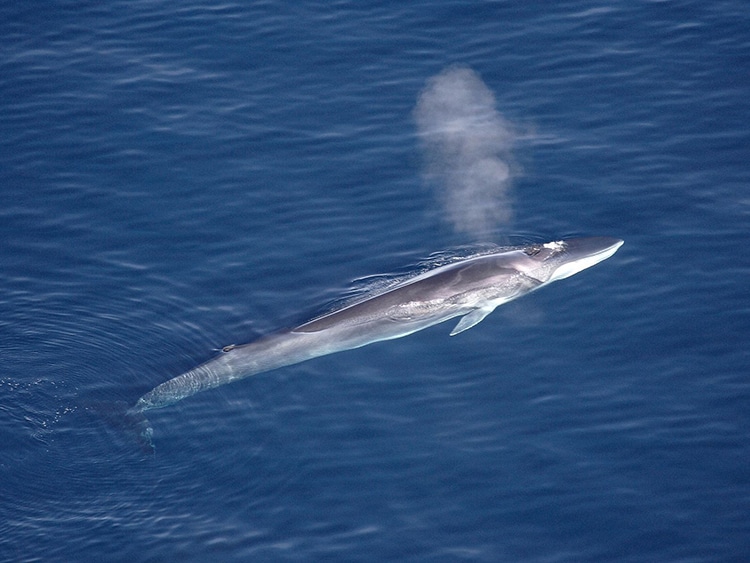
A fin whale. (Photo: Aqqa Rosing-Asvid via Wikimedia Commons, CC BY 2.0)
h/t: [ABC.Net.Au, NBC]
Related Articles:
Majestic Photos of 8 Remaining Species of Bears Are Featured in Conservation Photo Book
Last Known Member of Giant Tortoise Species Thought To Be Extinct Is Discovered on Galápagos Islands
San Diego Zoo Celebrates First Male Golden Takin Calf Born in Western Hemisphere
California Condors Return to the Redwoods After a Century’s Absence

















































































